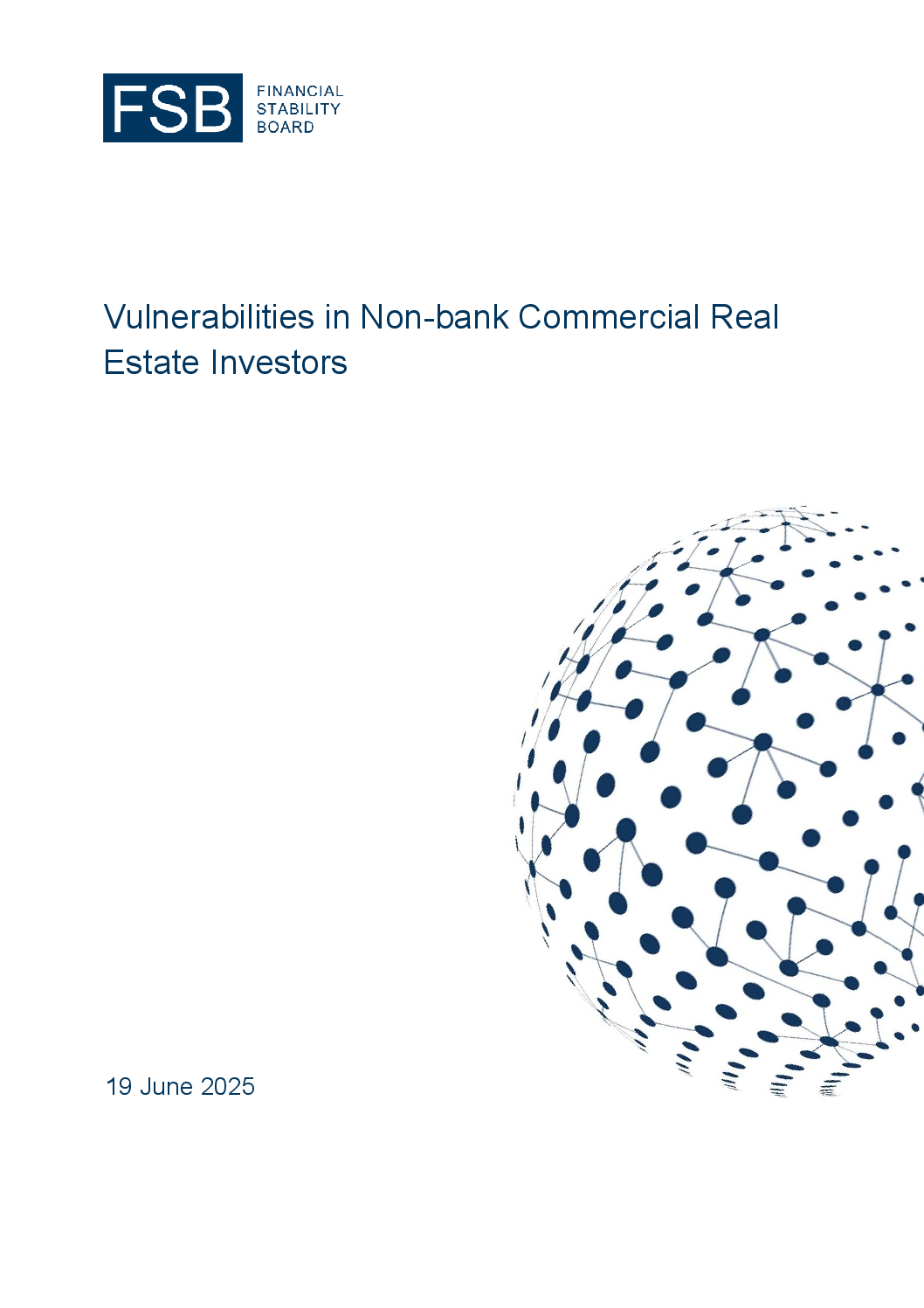Press enquiries:
+41 61 280 8477
[email protected]
Ref: 12/2025
- FSB identifies liquidity mismatches, leverage, and valuation opacity as the main vulnerabilities in real estate investment trusts (REITs) and property funds.
- Report also notes complex interlinkages between banks and non-bank CRE investors, which increases the potential for spillovers from CRE market shocks.
- Report underscores the importance of closing data gaps to enhance authorities’ ability to monitor risks from non-banks’ involvement in CRE.
The Financial Stability Board (FSB) today published a report analysing the vulnerabilities in non-bank commercial real estate investors. The report builds on the findings of the 2024 FSB report on interest rate and liquidity risks in the financial system, which identified non-bank CRE investors – comprising real estate investment trusts (REITs), property funds, and other non-bank mortgage lenders – as one of the entity types vulnerable to higher interest rates.
Data from FSB members suggests banks and nonbanks collectively provided at least $12 trillion in equity and debt financing to CRE in 2023. While banks remain the main source of such financing, non-bank investors – particularly property funds and REITs – play a significant role in some jurisdictions. The report identifies three main vulnerabilities in these investors:
- Liquidity mismatches: Some open-ended property funds show significant liquidity mismatches and may therefore be vulnerable to runs. There have been a number of instances in recent years where such funds, in the face of significant investor redemption requests, introduced gates or suspended redemptions due to illiquidity in the underlying market. Implementing the FSB’s recommendations on addressing liquidity mismatches in open-ended funds would help to address this vulnerability.
- High financial leverage: There are pockets of high financial leverage in some REITs and property funds. A decline in property valuations or an inability to roll over maturing debt could lead to forced deleveraging that can propagate across the CRE market.
- Opacity in valuations of CRE assets: The CRE market is illiquid, and it may therefore be difficult to price assets and collateral, especially in times of stress. Delayed loss recognition due to infrequent valuations and lenders’ loan modification practices can lead to abrupt losses in a prolonged downturn. The report notes that enhancing transparency and ensuring that investors take account of valuation uncertainty in their risk management practices could help mitigate this vulnerability.
The report also highlights the complex interlinkages between banks and non-bank CRE investors. Banks are the main debt providers to, and can also invest in, REITs and property funds. Banks may also have common asset exposures to these investors, which increases the potential for shocks to the CRE market spilling over to the banking sector. A more complete overview of these interlinkages is limited by considerable data gaps, despite improvements in recent years. Closing some of these gaps would enhance authorities’ ability to monitor risks.
So far, the global financial system has weathered the recent adverse developments in the CRE market. This can be attributed to the market’s heterogeneity; lower loan-to-value levels than previous episodes of stress; and the ability of some distressed borrowers to refinance. However, ongoing monitoring of the market is warranted given the more volatile performance of CRE exposures compared to other assets, structural shifts in demand, and the effects of extreme weather events and new energy efficiency standards in some jurisdictions.
Notes to editors
The FSB coordinates at the international level the work of national financial authorities and international standard-setting bodies and develops and promotes the implementation of effective regulatory, supervisory, and other financial sector policies in the interest of financial stability. It brings together national authorities responsible for financial stability in 24 countries and jurisdictions, international financial institutions, sector-specific international groupings of regulators and supervisors, and committees of central bank experts. The FSB also conducts outreach with approximately 70 other jurisdictions through its six Regional Consultative Groups.
The FSB is chaired by Klaas Knot, President of De Nederlandsche Bank. The FSB Secretariat is located in Basel, Switzerland and hosted by the Bank for International Settlements.
